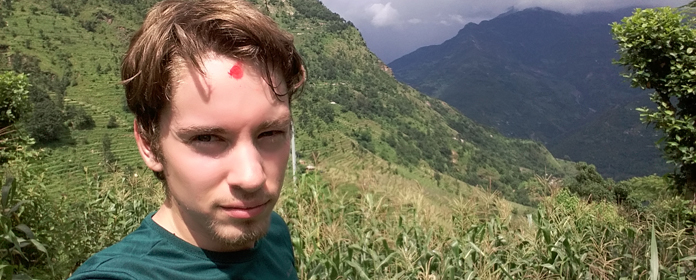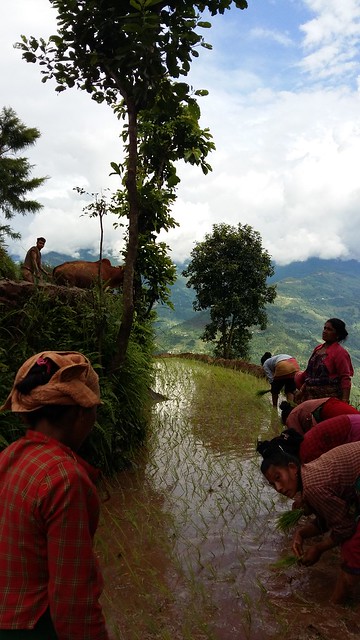"When I arrived in the village, the first thing I saw were the metal plates used as insulation, which were used as walls and roofs of the houses."
Mario Rodríguez, student 3rd year Pharmacy + IPC, has spent a few weeks in Nepal collaborating in a hospital and a health post.

Mario Rodríguez Monteverde, a student of 3rd year of Pharmacy and the International Pharmaceutical Certificate, has worked this summer as a volunteer at the Stupa Community Hospital in Kathmandu (Nepal) and in a small village in the mountains in the Mangkha district. Upon his return, he recounted his experience as a pharmacist one year after the terrible earthquake that devastated the country.
"When I arrived in the village -PariGaon, with 150 inhabitants-", he recalls, "the first thing I saw were metal plates used as insulation and that there were the walls and roofs of the houses, with stones on top so that the wind would not blow them away". Before the 2015 earthquake, he adds, "this village was a collection of traditional Nepali houses built with mud bricks. Now people say that they are not getting any of the money they are supposed to have been allocated for reconstruction."
In the capital the status is no better. "Near the 'Stupa Community Hospital' there are still tents where people who have not yet recovered their homes are sheltering. Meanwhile, doctors and guides assured that priority was being given to temples and cultural centers in the reconstruction of the country, rather than to the homes of the Nepalese."
A health post run by volunteersDespite this, Mario adds, "the family I stayed with in the village was happy at all times. There was never a shortage of food in the house and there was always something to do. The children woke up every day at six in the morning and from the age of eight they started working in the rice fields. They had no telephones, no television, no leisure center, but they were happy and just hoped they wouldn't get sick," says Mario.
For a week she worked at the health post along with another volunteer. "In this post there were no doctors, but four health assistants who worked about four hours a day together with nine volunteers distributed throughout the different areas of the district." "There we received a average of twenty patients a day, although on those dates the number was reduced due to the monsoon rains."
In this center, resources were scarce: "There was a list on the wall to write down the medicines that the state was supposed to send to each health post four times a year". Predictably, some never arrived. "Although most of the drugs were paid for by the government, including the one required to fight tuberculosis, others came from NGOs and some had to be paid for by the patient." "When a fracture came," Mario adds, "you could immobilize it, but they didn't have the material to operate, nor did they have antidotes for poisonous snake bites, for example."
While in the capital there were more cases of typhoid fever, cuts, alcoholism and gastrointestinal diseases, in the rural area there were more cases of foot infections, almost all caused by fungi. "This problem was due to the fact that we were in the middle of the rice planting season, and the workers were constantly walking barefoot in the mud, with water up to their knees," the student concludes.
For him, who last year also opted for a summer of work abroad, the most remarkable thing about the experience in Nepal has been to experience firsthand the status of this country just a year after the terrible earthquake that killed more than 9,000 people and from which they are still trying to recover.

